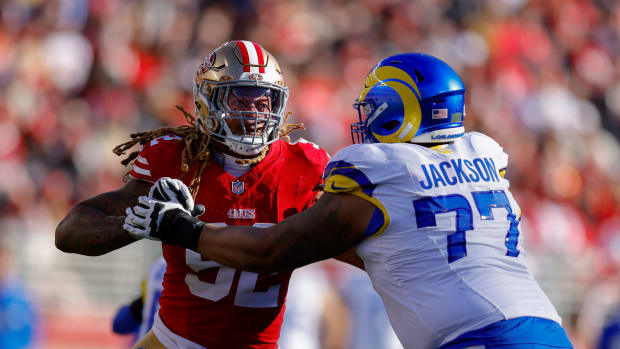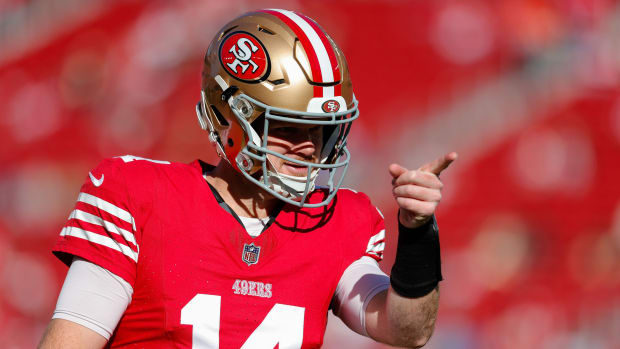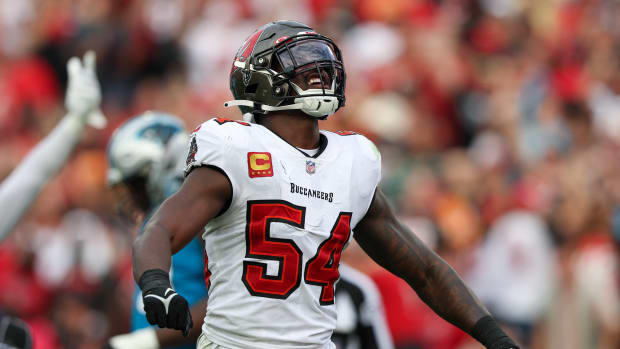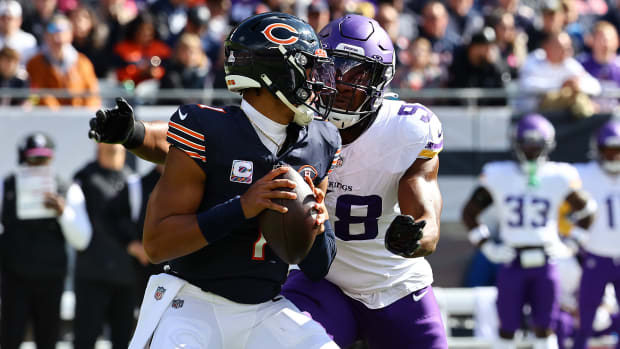Scouting Green Bay: Make or Break Season for Eddie Lacy
1. Aaron Rodgers is coming off a bad season—by his standards, anyway. Rodgers is not a naturally rhythmic quarterback; he has a uniquely scattered style, with unconventional in-and-out-of-pocket movement, a quick release from varied throwing platforms and what can appear to be a total absence of fundamental footwork. These traits make him hard to defend, but they can work against him, too. On the one hand, when Green Bay’s offense isn’t clicking, which was mostly the case last season, Rodgers can still make plays (and not just with a Hail Mary throw). On the other hand, sometimes the offense doesn’t click because Rodgers is too eager to play out of structure. He must be more disciplined operating within the play’s timing.
2. It’s hard to play on time if your receivers aren’t getting open against man coverage. This was what derailed Green Bay’s offense in 2015. The return of Jordy Nelson should help. Not only is he a true No. 1 receiver who can win on the quick slants and back-shoulder sideline throws that Rodgers loves, but his presence knocks every other receiver a notch down in the pecking order, giving those guys easier roles to fill. That said, Packers coaches still must expand their play designs. Mike McCarthy’s West Coast spread system produced far too many isolation routes last season. From a tactical standpoint, it was extremely easy to defend. More intertwined route combinations, formation variations and an expansion of packages that have Randall Cobb shifting before the snap (including in and out of the backfield) are good starting points.
• THE MMQB CAMP REPORTS: Packers | Bucs | Dolphins | Jaguars | Panthers | Lions | Falcons | Steelers | Bills | Eagles | Patriots | Giants | Colts | Jets
3. The Packers will come to regret not re-signing veteran fullback John Kuhn. Their running game became more foundational once Kuhn got more snaps last December. Fullbacks are going the way of dinosaurs, but one thing they do give you is the ability to create gaps and change running lanes after the snap. The Packers have always capitalized on that.
4. It’s make or break time for Eddie Lacy. His rookie contract expires after the season. Will the Packers see him as an irreplaceable battering ram or just another guy? Its’s completely up to Lacy. This team has catered to his methodical style, tweaking its running formations and QB-to-RB exchange concepts for him. (Notice how whenever Lacy runs outside zone plays, he either lines up in an offset shotgun position or gets the ball pitched to him. Both are tactics to compensate for his lack of speed and quickness.)
• FANTASY RANKINGS:QUARTERBACKS | RUNNING BACKS | WIDE RECEIVERS | TIGHT ENDS
5. The Packers will have an interesting decision to make with left tackle David Bakhtiari after this season, when his rookie deal also expires. Bakhtiari has improved precipitously since entering the league as a fourth-round pick in 2013, but being light in the backside, he’ll always struggle against bull rushers. GM Ted Thompson, per usual, has hedged his bet by drafting Bakhtiari’s possible replacement, Jason Spriggs, in the second round this year.
6. Green Bay’s defense is the most diverse in the league. Coordinator Dom Capers uses a ton of different personnel packages, presnap disguises, pressure concepts (especially up the middle) and coverages—including within the same play, where the Packers will go zone on one part of the field and man-to-man on the other. This multifaceted approach is hard to master (there’s not time to practice everything), but it’s also frustrating to play against. It’s no surprise Green Bay’s D can look anywhere from ugly to gorgeous in any given week.
7. I’d think twice about playing Clay Matthews at outside linebacker. Is he a more dynamic pass rusher there? Yes. But he provided desperately needed stability when moving inside midway through the 2014 season. The Packers that year ranked 32nd in run D before Matthews moved inside, and fifth in the games after the move. Now inside linebacker is once again the only position in question for Green Bay. And if Matthews is coming off the edge, you take away from Capers’s hallmark interior blitz concepts.
8.Julius Peppers is in the perfect situation. He’s part of a deep, versatile front seven that allows him to play almost anywhere and doesn’t demand that he be on the field more than 70% of the time. Last season the 36-year-old was at his best in December and January. That’s highly unusual.
9. From a pure football standpoint, Sam Shields is the game’s most polarizing cornerback. Some NFL coaches think he’s tremendous, others think he’s terrible. Fortunately for Shields, his coaches are of the former mindset. You can tell by the way they use him. Shields often travels with opposing No. 1 receivers, especially if that receiver is well-sized. And Capers has openly admitted he’s more comfortable playing man coverage and calling blitzes when Shields is healthy. Shields will be even more critical if talented but undeveloped second-year corner Damarious Randall remains so up-and-down. And also if the Packers can’t figure out who replaces departed free agent Casey Hayward in the slot. (Quinten Rollins? Micah Hyde? Randall sliding inside?)
10.Ha Ha Clinton-Dix will be a consensus top-five safety by the end of this season. Long, sinewy frame, a stride that covers ground, open-field tackling, vivid improvement in man coverage and adeptness in deep centerfield or the box.
Question? Comment? Let us know at talkback@themmqb.com




































